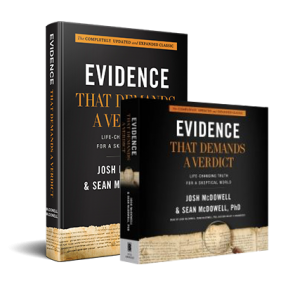Modern Christians don’t have to defend the validity of the Bible.
In last week’s blog post we answered the question, “Did ancient scribes faithfully transcribe biblical texts?” Resoundingly, research shouts, “YES!” One truth we hope you’re learning, as we travel this series together, is that the Bible is the most vetted document in the history of the world.
So much historical documentation exists to confirm the faithful transcription of Scripture. An impressive statistic:
Of just the known 5,800+ Greek New Testament manuscripts, there are more than 2.6 million pages! That equates to one mile of New Testament manuscripts (and 2.5 miles for the entire Bible), compared with an average four feet of manuscript by the average classical writer. Combining both the Old and New Testament, we have more than 66,000 manuscripts and scrolls that speak to the validity of Scripture!
In this week’s post, let’s look at important Hebrew manuscripts that help to validate Old Testament Scripture.

Hebrew Sources
Scholars deem these five ancient Hebrew sources to be immensely valuable for biblical research:
The Masoretic Text
As we noted in last week’s post, the majority of English translations of the Old Testament are derived from ancient texts created by the group of scribes called the Masoretes. Specifically, the Aleppo Codex and the Leningrad Codex, which they produced in the 10th and 11th centuries. Following the tradition of earlier scribes, the Masoretes were committed to faithfully preserving the correct form of the Hebrew text.
The tradition of the Masoretic Text is significant for four reasons: It provided the only textual witness to the Old Testament for more than 1,000 years (9th century AD to 1947 when the Dead Sea Scrolls were discovered); its internal consistency clearly attests to the care, precision, and systematic rigor with which the Masoretic scribes copied the manuscripts; the Masoretic Text tradition allows the textual critic to reasonably assume a prior tradition going back to as early as AD 70; and it provides the primary textual witness by which all other textual witnesses are measured.
The Dead Sea Scrolls
It was the discovery of the Dead Sea Scrolls that helped scholars to answer this question: “Does the Masoretic Text faithfully represent the Hebrew text as originally written by the authors of the Old Testament books?”
The first of the Dead Sea Scrolls were discovered, in early 1947, in a cave by Bedouin shepherds, near an ancient site called Qumran.
The cave, which became known as Cave 1, is located about a mile inland from the Western shore of the Dead Sea, about 13 miles east of Jerusalem. By 1956, a total of 11 caves had been discovered at Qumran, gifting the world with almost 1,050 scrolls written in Hebrew, Aramaic, and Greek. Other scroll discoveries followed in the vicinity of the Dead Sea. Thus, when you hear the term “Dead Sea Scrolls,” it refers, collectively, to all scrolls found in the area, not just in the caves at Qumran.
The earliest scrolls found at Qumran date back to 250 BC, if not earlier. The latest scrolls were copied shortly before the destruction of the Qumran site by the Romans in AD 68. In total, scholars have identified nearly 300 biblical scrolls among the manuscripts discovered in the area.
Famed archeologist William F. Albright pronounced the scrolls to be “the greatest archaeological find of the twentieth century.” The overall value of the manuscripts are, indeed, invaluable, as the scrolls exponentially increased scholarly knowledge of Scripture text. That because until 1947, Scripture research was based on Hebrew-Aramaic text that had been copied 1,200 years or more after the composition of the biblical books.
The scrolls provide a rich background of information on the technical aspects of the copying of biblical texts in the Second Temple period. Too, the scrolls substantially support the reliability of the Septuagint. Scholars believe the scrolls offer “backlighting on the New Testament,” which aids in scholarly understanding of New Testament passages.
The Samaritan Pentateuch
The Samaritan Pentateuch is a version of the Hebrew Torah (the first five books of the Old Testament) that was written in a special version of an early Hebrew script. Scholars date the manuscript to as early as 3rd century BC. This popular version of the Torah, which was in use prior to the rabbinic tradition, provides scholars with yet another witness to the earlier forms of the Pentateuchal texts.
In this interesting article, modern Samaritans state their belief that their version of the Torah is older and more authentic than the Masoretic version.
The Nash Papyrus
This importance of this Hebrew manuscript lies in this: before the discoveries at Qumran, the Nash Papyrus was the earliest textual witness to the Hebrew Bible. Purchased from an Egyptian dealer in antiquities in 1902 by Dr Walter Llewellyn Nash, it dates to between the 2nd and 1st century BC. The manuscript contains the Ten Commandments, parts of the Book of Exodus, and parts of the Book of Deuteronomy. The Manuscript is housed at the University of Cambridge.
It’s mind-blowing that these really old manuscripts were casually discovered in the shops of antiquities dealers — an occurrence that still happens today! Treasures even get listed on eBay.
The Silver Amulets
Israeli archaeologist Gabriel Barkay discovered the two tiny silver amulets in a family burial chamber in 1979, while excavating in Ketef Hinnom, a section of the Hinnom Valley south of Jerusalem’s Old City. Once unrolled and studied, the Silver Amulets, which would most likely have been worn around the neck or wrists, were found to be densely covered in ancient Hebrew script. The script has been confirmed to be from the period just before the destruction of Jerusalem in 586 B.C. by Babylonian king Nebuchadnezzar.
Lawrence Schiffman, former professor of Hebrew and Judaic studies at New York University, describes the amulets: “The priestly blessing (Numbers 6:22-27) played a major role in Jewish worship in the Temple and synagogue. Its text, inscribed in the ancient Hebrew script, was found on an amulet from the 7th-6th century BC at Ketef Hinnom in Jerusalem. This inscription is the earliest attestation of a text from the Torah. Some scholars have argued that this amulet proves that the blessing preexisted the book of Numbers. In our view, the use of this passage as an amulet indicates that is was already know in is present context.”
Watch this short video on the discovery, if you’d like more information. Cool fact: The amulets are nearly 400 years older than the Dead Sea Scrolls!
Non-Hebrew Sources
Just two ancient non-Hebrew sources that scholars deem immensely valuable for biblical research:
The Septuagint (LXX)
After the conquest of the Middle East by Alexander the Great (c. 330 BC), Greek became the dominant language of Hellenized Jewish communities. This prompted the translation of the Hebrew-Aramaic manuscripts into Greek.
The Septuagint was originally the only Greek translation of the Pentateuch. The Septuagint began to take shape in the 3rd century BC, in response to the needs of the Alexandrian Jewish community. Initially, just a version of the Torah for worship and study was translated. But by the 2nd century, the books of the prophets were also translated.
This manuscript differs from the Hebrew Old Testament in its number and order of books. The LXX contains books not found in the Hebrew tradition, some of which are preserved in the Roman Catholic Bibles and normally referred to as Apocrypha. The text of the LXX has been preserved in three forms: ancient papyri, uncials (Greek manuscripts written in all capital letters that were commonly used between the 1st and 6th centuries AD), and medieval minuscules (Greek manuscripts written in smaller cursive script, mostly used between the 9th and 15th centuries AD).
Some of the early fragments include the Rylands Papyri (one of the oldest fragments of the Greek Bible), the Chester Beatty Papyri, and the Oxyrhynchus Papryi. The oldest and most complete manuscripts of the LXX available to scholars today include Codex Vaticanus (4th century AD), Codex Sinaiticus (late 4th to early 5th century), and Codex Alexandrinus (mid 5th century AD).
The historical significance of the LXX, including its various renditions, continues to be definitive in the life of the church and for biblical scholars. During the early centuries AD, most Bible translations were made from the Septuagint. The understanding and use of the LXX as a tool in biblical criticism were significantly advanced by the finds of the Hebrew scrolls at Qumran. The LXX has definitely been recognized by most biblical scholars as a tool that provides important information for the textual criticism of the Bible.
The Hexapla
This early non-Hebrew witness to the Old Testament, compiled by Origen of Alexandria in Caesarea, Palestine, before AD 245, engaged Jews in a discussion of the Greek text. It is believed that the entire work, which is a synopsis of six versions of the Old Testament written in six parallel columns, took Origen 20 years to complete and required many, many codices. Although the Hexapla no longer exists in its original form, scholars know its contents from fragments, quotations from church fathers, and marginal notes in Septuagint manuscripts.
The Bible’s Power? Its Truth
As noted before, the Bible is an extraordinarily unique manuscript. Unique in that so many hands worked to write it, compile it, and protect it, as historical manuscripts show. The Bible also is unique in its diversity of content, genres, and teachings. Why has the Bible remained the most widely distributed book in history? Why does it remain the world’s number one seller? Put simply, it’s God’s truth. And His hand is upon it.
Have you read the Bible for yourself? You might start with our free daily devotionals. Devotionals are helpful because they help us to focus on a particular issue in scripture. This week, find a 10-minute period of time each day in which you can read your selected devotional. God is waiting to meet with you!

This blog post highlights Josh and Sean McDowell’s recently revised apologetics classic, Evidence That Demands a Verdict. We are certain this fully updated and expanded resource will be an effective evangelism tool for you, and strengthen your faith by answering the toughest questions tossed to you by skeptics. Know what you know, because it’s true. But share this truth with LOVE!



